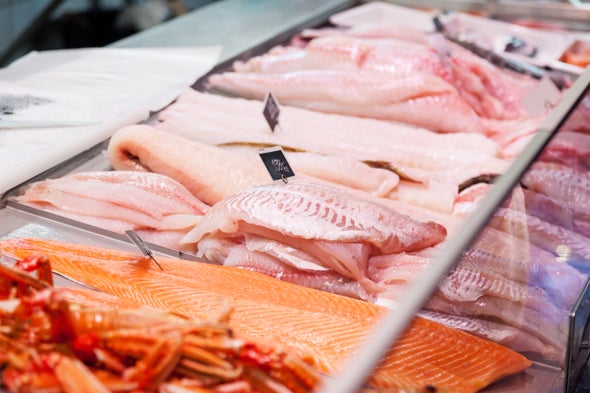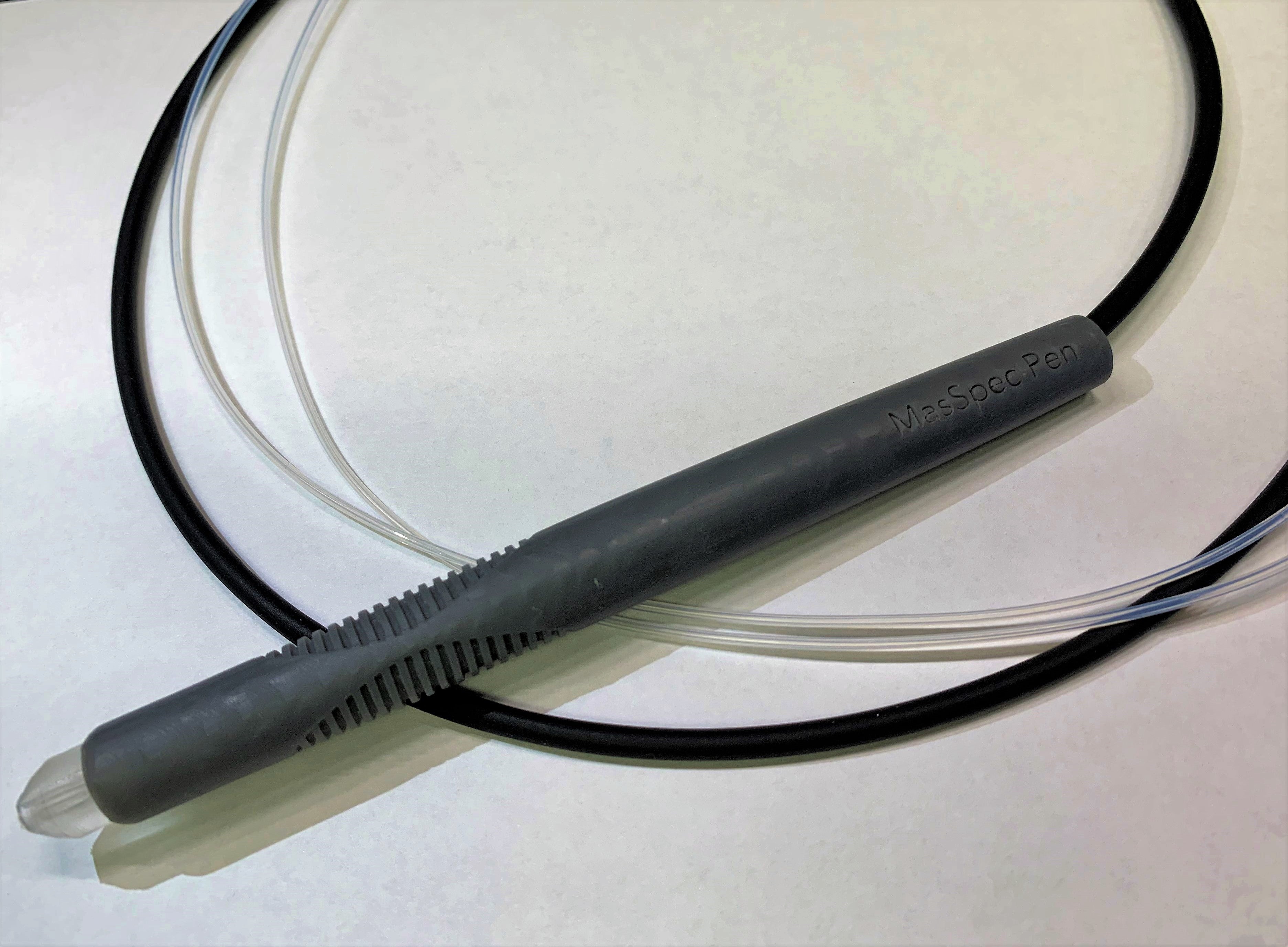
When chemistry graduate student Abby Gatmaitan first visited the University of Texas at Austin on a recruiting tour, she learned about the MasSpec Pen—a handheld device that scientists there were developing to diagnose tumors on contact. “I knew that was where I wanted to do my research,” she says. Shortly after joining the lab, she realized that if the pen could categorize human tissue, it would probably also work on other animals.
Gatmaitan had a very specific problem in mind, and her hunch paid off. Her research, published this spring in the Journal of Agricultural and Food Chemistry, showed that touching the tip of the “pen” to a sample of raw meat or fish could correctly identify the species it came from. The device was tested on five samples and took less than 15 seconds for each of them. Roughly the length of a typical ink pen, the tool provided answers about 720 times faster than a leading meat-evaluating technique called polymerase chain reaction (PCR) testing—and it was much easier to use. Gatmaitan says it could help scientists tackle a global conservation issue: mislabeled seafood.
Seafood fraud is not just a concern for the restaurant diner who orders expensive, wild-caught red snapper, only to wind up with a plate of mercury-laden tilefish. Such deception also threatens the environment. Mislabeled fishes often come from poorly managed fisheries that can harm local ecosystems. Sometimes a fish is passed off as the wrong species or is falsely claimed to have been caught in a different geographical area in order to evade conservation laws or sell a catch for more money than its market value.

The problem is widespread. A 2019 analysis in Biological Conservation found that around 8 percent of seafood products are mislabeled. Some fish are more prone to fraud than others. One study by the nonprofit ocean conservation organization Oceana sampled species known for being mislabeled, such as snapper and tuna, and found that a whopping 87 and 59 percent, respectively, were labeled incorrectly.
To spot mislabeled fish before it reaches consumers, inspectors from government organizations, including the U.S. Food and Drug Administration, must be able to test whether a sample’s purported species and place of origin are accurate. Such testing also enables watchdog organizations to stamp the packaging of verified fish with “ecolabels,” which show consumers that the seafood meets the organizations’ inspection standards. Using the pen technology “seems to be an affordable and quick way for businesses to make some quick, science-based verifications of what exactly the species is,” says Natalie Hunter, head of supply chain development at the Marine Stewardship Council (MSC), a nonprofit group that provides one of the most prominent ecolabels currently in use.
The MasSpec device looks like a swollen gray ballpoint pen with a thin tube snaking out one end that connects it to a mass spectrometer and a supply of solvent. To test its performance, Gatmaitan touched the pen’s tip to samples of fish she had bought at the grocery store. The pen released a droplet of solvent onto the sample’s surface and then sucked it back into the pen, through the tube and into the mass spectrometer.
Inside the machine, each sample was automatically dissolved in the solvent and then vaporized, turning its chemical components into ions. The ions were beamed through a magnetic field, which bent their path so that each one shot in a new direction—based on its mass and electrical charge—before landing on a detector plate. By noting each ion’s position on the plate, the system could identify which chemicals (and how much of each) were in the sample.
Almost immediately after the pen touched the fish, the machine’s computer screen displayed a hilly graph showing each compound’s amount, which varies, depending on a fish’s species and diet. Other scientists have already learned the chemical profiles that categorized many fish species, and Gatmaitan’s team used these profiles to train the device’s computer. It associates certain graph shapes with various fish species and then displays their names on a screen: “halibut,” “cod,” “sockeye salmon.” In the future, the researchers could build similar chemical profiles to reveal where a fish came from and whether it was wild-caught or farm-raised.
The device is relatively affordable. It uses disposable tips and a couple droplets of common solvents per test. And it does not harm the sample, so fish can be safely sold and eaten after testing.
The MasSpec Pen will enter a commercial market that already has reliable (if slower and costlier) techniques, including DNA testing. Any new technology like this will initially lack the robust public data repository needed to make it accessible and verifiable, notes Katie Longo, a senior scientist at MSC. Still, Gatmaitan says several government labs have expressed interest in using the pen to test food, and the U.T. Austin researchers are working to make it more field-friendly. Fish testing labs can connect the pen to their own mass spectrometer equipment—but Gatmaitan and her colleagues also want it to be connectable to existing portable machines so it can function in various locations. They are currently building up their database of fish species’ chemical profiles so they can test mixed samples or pinpoint where in the world a fish was caught.
“Atlantic salmon and sockeye salmon are very easily substituted for each other because they look identical, but their habitat is different,” Gatmaitan says. “We hope to get even more specific than that—maybe even determine which fishery they came from.”
"fish" - Google News
May 17, 2021 at 05:45PM
https://ift.tt/3ePlGN4
Fraudulent Fish Foiled by Cancer-Catching Pen - Scientific American
"fish" - Google News
https://ift.tt/35JkYuc
https://ift.tt/3feFffJ
Bagikan Berita Ini















0 Response to "Fraudulent Fish Foiled by Cancer-Catching Pen - Scientific American"
Post a Comment